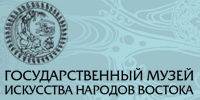
The issue opens with the picture story “Cambodia” by Anna and Aleksey Popov.
In 2008, there is 190th anniversary of the Asian Museum in St. Petersburg, the first Orientalist research institution in Russia. Irina Popova, Director, Institute of Oriental Manuscripts, Russian Academy of Sciences, tells about the history of the Museum.
Year of Turkey in Russia
Tatyana Anikeeva. The Mystery of The Black Pen. The library of Topkapi, the Royal palace of Istanbul, holds drawings that, according to tradition, had been made by the medieval painter Siyah Kalem (“The Black Pen”), of whom we know practically nothing. The artistic manner and themes of these drawings are quite unusual for their time.
Marina Melanyina. The Wind from Bosporus on Mokhovaya Street. The festival of Turkish culture took place in the Oriental Centre, Russian State Library. The masters who came from Turkey introduced to the guests the art of calligraphy (khat) and painting on water (ebru).
Writings
Darya Mikhneva. Angels Who Look Like Losers. The author introduces the well-known Japanese poet Shuntaro Tanikawa and her translations of his verse from Klee’s Angels collection. The drawings by Paul Klee, Swiss painter and graphic artist, accompany this publication.
Zhuldyz Tulibaeva. The Legendary History of Sairam. For many centuries, Sairam, the ancient town in Southern Kazakhstan, had played an important part in the cultural development of the region. The history of this town, in which reality is mixed with legends, is described in a work called Risala; the author presents a portion of this work in her translation from Chagatai language.
Alexandria, the publication of which our magazine had started in the previous issue, is continued with the story about the further heroic deeds of Alexander the Great in Persia.
The Land of Orient
Andrey Strelkov. The Eagle’s Nest of Tsongkhapa. The author’s research trip to the high-mountain Tibetan monastery of Ganden, which is related to the activities of Tsongkhapa, the Buddhist saint. Having performed numerous miracles, in 1419 Tsongkhapa entered the state of samadhi, yogic trance, and his body remained incorruptible. Unique photographs accompany this essay.
Aminat Bolurova. The Steps of Childhood. A description of rites that in the 19th – early 20th century accompanied the birth and upbringing of children of the Karachays, the small people of Northern Caucasus. Quite a few of this rites have been preserved to our times, albeit in a modified form.
Dmitriy Sevruk. Sudan: Shadows of the Past. After a journey to this country, where military conflicts seem to never cease, the author makes a conclusion, “The Sudanese, whose bravery, warlike attitude, and religious fanaticism made them hot opponents of the greatest and most powerful of empires – Egypt and Great Britain, seem to be powerless in the teeth of the changed world, which demands wholly different qualities of mind.”
Viktor Usov. In the Land of Rice, Fish, and Revolutionaries. The Chinese Hunan province had been traditionally considered as the “land of rice and fish”. Now it is also known as the birthplace of prominent revolutionaries.
Sergey Smorodkin. Tamga. In the Kazakhstan steppe the author had made acquaintance with a berkutchi, a chasseur who uses hunting birds – golden eagles. On the bird’s leg the author noticed a ring with a tamga of two parallel lines. This ancestral sign of the Kipchaks reminded him of a completely different story related to the invasion of Napoleonic armies in Russia...
Viktor Pogadaev. Let’s Play Volleyball... By Foot! The folk game of playing the ball weaved from rattan, which originates from the Malay Peninsula, is becoming more and more popular not only in Asia, but also in Europe and America.
Khalima Khushkadamova. Look at the World With Clever Eye... Abuabdullo Rudaki, the founder of Tajik-Persian classical literature who was born 1150 years ago, was called ustod, the master who teaches life by his creative work.
Kirill Demichev. The Women Riders of Ranjit Singh. The Maharaja Ranjit Singh who in the early 19th century had united the Sikh lands, had formed a special women’s regiment in his army. The members of British military mission, who visited Punjab, described this unusual novelty in their books.
Vladimir Kolupaev. Remembering India... India was one of the countries where Russian emigres had sojourned for a brief time. Among our compatriots there were quite a few priests who afterwards published books and articles about this country.
Rustam Mirzaev. A Mahallya has a Chaikhana, a Chaikhana has a Samovar. Mahallya is a self-governed community in Uzbekistan, which unites from 500 to 1000 families. An informal centre of the community, where inhabitants of neighbouring houses usually meet, is a chaikhana, the place for drinking tea, resting, and relaxed talking.
The “Orientnet” section features the Web-sites related to Himalaya mountains.
Please e-mail your wishes, suggestions and comments to the following address: orientnet@rsl.ru.You can find the summaries of the previous issues online, by visiting our section of the Russian State Library Web-site: http://orient.rsl.ru/en/






